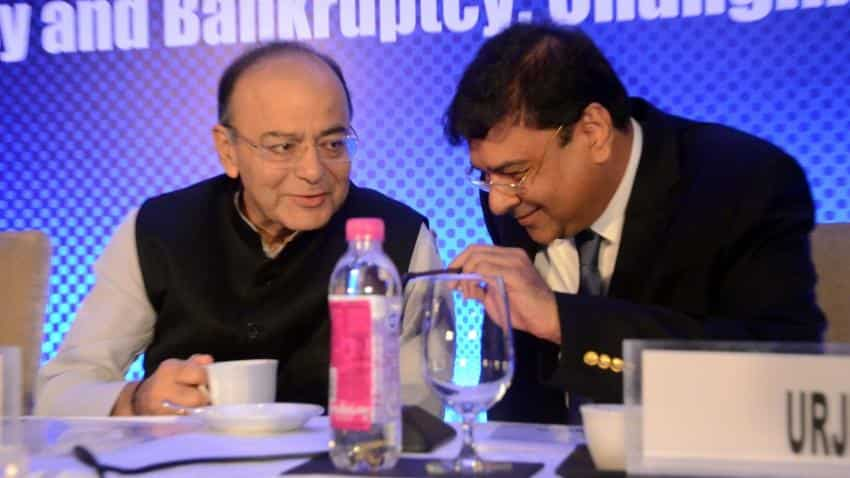Monetary Policy: Why rising inflationary pressures make a case for RBI to maintain status quo
What will the Reserve Bank of India do in today's Monetary Policy review and how does it impact you? We tell you all about it.

Key Highlights
- It is largely expected that RBI will leave rates unchanged in the second last monetary policy of the financial year.
- Some anticipate a repo rate cut of 25 basis points.
- CPI and WPI inflation have been nearing the 4% mark.
The fifth bi-monthly monetary policy by the Central bank of India will be revealed on Wednesday by the Monetary Policy Committee. This much talked about policy will dictate lending rates for the next two months until the Committee meets again.
Analysts surveyed by Bloomberg and Reuters are of the opinion that the MPC will not make any changes to the repo rate which stands at 6%.
While some are of the opinion that the RBI will make a rate cut of 25 basis points to 5.75%.
Repo rate is the interest rate at which RBI lends to commercial banks through repurchase of government securities. In simple terms it is a way to keep in check the money supply in an economy.
Reverse Repo rate is the rate at which RBI borrows money from the commercial banks.
A simple understanding of inflation will point out that the RBI under the governorship of Urjit Patel will most likely maintain status quo or in other words – leave rates unchanged. Here’s why.
Consumer price inflation in India has been on a rising trend since July this year. This index is important as it considers the weighted average of prices of a basket of consumer goods.
You may have noticed an uptick in vegetable prices including onions, tomatoes and even eggs that have now reached the highs of over Rs 80 per dozen.
CPI stood at 3.58% in October from a low of 1.54% in June.
Even whole sale price index, which tracks the price change of food before it reaches retail, has been on the up and up. WPI inflation stood at 3.59% in October. It was 0.9% in June.
Inflationary pressures are typically lower in the monsoon months of June and July on the back of early showers and estimated good harvest.
However, as the prices of food increases during winter months a rate cut or rate hike would directly impact rate at which lending of money transactions from banks would be effected.
So how does this impact you?
When the RBI cuts ‘repo’ rates or interest rates by say 25 basis points, it would mean that equated monthly instalments taken on cars, homes and even personal loans will be brought down as well.
However, over the years as the RBI has brought down interest rates to 6%, banks have been hesitant to rates that directly impact consumers.
Rate cut or rate hike is also depended on estimated growth rate of the economy. India’s GDP growth rate improved from the first quarter of FY18 to 6.3% in Q2. However, this was still lower than Q2 FY17 which was at 7.5%.
Finance Minister Arun Jaitley has said that India has standardised itself for 7-8% growth in FY18.
Nevertheless RBI’s outlook comprising GDP estimates for the rest of the financial year will be closely watched.
Also Read:
Get Latest Business News, Stock Market Updates and Videos; Check your tax outgo through Income Tax Calculator and save money through our Personal Finance coverage. Check Business Breaking News Live on Zee Business Twitter and Facebook. Subscribe on YouTube.
11:32 AM IST














 RBI Governor says inflation horse has been brought to stable with a lot of effort: Full text of his October 9 speech
RBI Governor says inflation horse has been brought to stable with a lot of effort: Full text of his October 9 speech RBI Monetary Policy: Governor Shaktikanta Das proposes to cut cheque clearance time to a few hours
RBI Monetary Policy: Governor Shaktikanta Das proposes to cut cheque clearance time to a few hours Retail inflation gradually easing, food prices still a concern: RBI Bulletin
Retail inflation gradually easing, food prices still a concern: RBI Bulletin Nifty crosses 23,000, Sensex up over 800 pts after RBI revises FY25 GDP growth projection to 7.2%
Nifty crosses 23,000, Sensex up over 800 pts after RBI revises FY25 GDP growth projection to 7.2% Rate cut might be contemplated in the second half of FY25: Care Edge
Rate cut might be contemplated in the second half of FY25: Care Edge